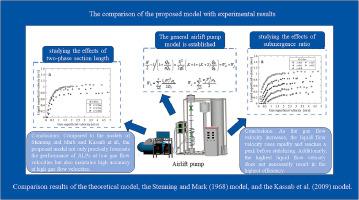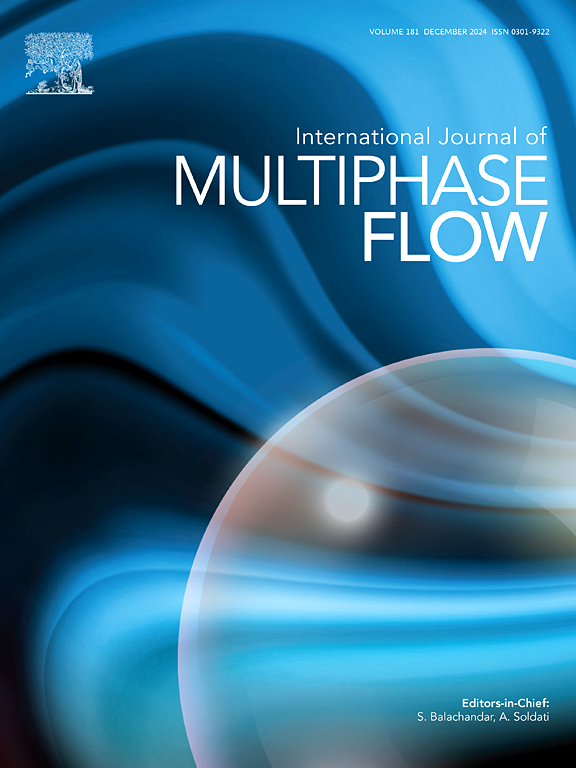Evaluate the performance of the vertically upward gas–liquid two-phase flow in an airlift pump system
IF 3.6
2区 工程技术
Q1 MECHANICS
International Journal of Multiphase Flow
Pub Date : 2024-10-09
DOI:10.1016/j.ijmultiphaseflow.2024.105016
引用次数: 0
Abstract
This paper conducts experiments on gas–liquid two-phase flow in airlift pumps (ALPs) using air–water as the medium, measuring liquid flow rates over a broad range of flow rates, and investigates the effects of submergence ratio and the two-phase pipe section length on the performance of ALPs. Evaluate the performance of ALPs under specified operating conditions. Experimental results show that liquid flow velocity initially increases with the increase in gas flow velocity and then stabilizes; the highest liquid flow velocity does not necessarily correspond to the highest efficiency. The performance of the ALPs increases with the two-phase pipe section length within a certain range of the two-phase pipe section length. However, once this range is exceeded, the performance of the ALPs is nearly unaffected by the two-phase pipe section length; the minimum gas flow velocity required to pump liquid increases as the submergence ratio decreases. This paper presents ALPs model that is independent of pipe diameter and flow range and validates it against experimental results. The model outcomes align well with the experimental data across all flow ranges. Additionally, the model effectively captures the sensitivity changes related to the two-phase pipe section length and the submergence ratio, and accurately predicts the minimum gas flow velocity required for liquid discharge under various operating conditions.

评估气举泵系统中垂直上升气液两相流的性能
本文以空气-水为介质,对气举泵(ALP)中的气液两相流进行了实验,测量了较大流量范围内的液体流速,并研究了浸没比和两相管道截面长度对气举泵性能的影响。评估 ALP 在特定工作条件下的性能。实验结果表明,液体流速最初会随着气体流速的增加而增加,然后趋于稳定;最高的液体流速并不一定对应最高的效率。在两相管道截面长度的一定范围内,ALP 的性能随两相管道截面长度的增加而增加。然而,一旦超过这一范围,ALPs 的性能几乎不受两相管段长度的影响;泵送液体所需的最小气体流速随着浸没比的减小而增大。本文提出了与管道直径和流量范围无关的 ALPs 模型,并根据实验结果对其进行了验证。在所有流量范围内,模型结果都与实验数据十分吻合。此外,该模型还有效捕捉到了与两相管道截面长度和浸没比相关的灵敏度变化,并准确预测了在各种运行条件下液体排放所需的最小气体流速。
本文章由计算机程序翻译,如有差异,请以英文原文为准。
求助全文
约1分钟内获得全文
求助全文
来源期刊
CiteScore
7.30
自引率
10.50%
发文量
244
审稿时长
4 months
期刊介绍:
The International Journal of Multiphase Flow publishes analytical, numerical and experimental articles of lasting interest. The scope of the journal includes all aspects of mass, momentum and energy exchange phenomena among different phases such as occur in disperse flows, gas–liquid and liquid–liquid flows, flows in porous media, boiling, granular flows and others.
The journal publishes full papers, brief communications and conference announcements.

 求助内容:
求助内容: 应助结果提醒方式:
应助结果提醒方式:


